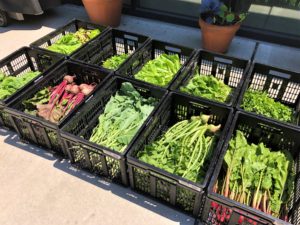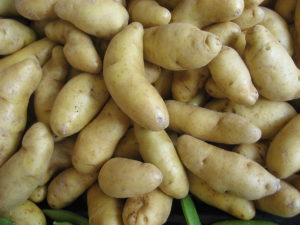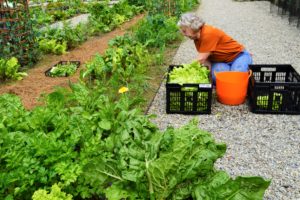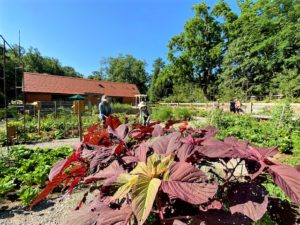Numbers are easy to throw around, unless the weight is one ton of food (or 2,000 pounds!) harvested and contributed from Lucille’s Garden to the Media Food Bank. To try and wrap our heads around that much food, let us first get a visual:
A black rhinoceros weighs one ton. So, too, does the Liberty Bell, a 1979 Volkswagen Beetle, a walrus, 31.2 cubic feet of saltwater, 333 standard red bricks, and 20 yards of track from the New York City Subway.
Now take each of these subjects and imagine in their place vegetables. Here are just a few harvest numbers from Lucille’s Garden:
- 108 lbs. of tomatoes (Being that the average weight of a tomato is 4 ounces, this would mean about 400+ tomatoes)
- 191 lbs. of potatoes
- 64 lbs. of sweet potato greens
- 242 lbs. Early Bulam squash
- 172 lbs. of beans
- 302 lbs. of lettuce (Given its lightness, that’s a lot of lettuce!)
- 84 lbs. of radishes
- 50 lbs. of okra
Quite a feat, no? Yes, it is. Why do all that work? Because when the going gets tough for some, others need to get going – planting, tending, and harvesting one ton of food for those in need.
The U.S. Department of Agriculture (USDA) defines food insecurity as a lack of consistent access to enough food for an active, healthy life. Some factors that bring about food insecurity include:
- a lack of affordable housing
- chronic or acute health problems
- high medical costs
- low wages
- unemployment
This is by no means a complete list. In 2019, an estimated 10.5% of Americans, roughly 13.7 million people, were food insecure. The COVID-19 pandemic has only worsened the problem, doubling food insecurity to hit as many as 23% of households in 2020.
Despite what we might imagine, there is no singular face of food security. Rates of food insecurity were higher among those with certain household characteristics:
- 14.8% of households with children, 15.3% of households with children under age 6
- 27.7% of households with a single woman, as compared to 16.3% with a single man
- 19.1% of black households and 15.6% of Hispanic households, as compared to 7.9% of white households
- 27% of those without a high school degree, as compared to 5% of college graduates
- 21% of adults with a disability
Given the 4.6% increase in the price of food (to a weekly average of $175.00 for a family of four) over the last twelve months–the largest increase in a decade–more and more people are finding themselves facing food insecurity and in need of assistance. The pandemic has impacted every single component of the food supply chain, from raw material, transportation, and labor costs, all of which have increased. No wonder we cringe when we look at the cash register in the checkout line.
The truth of the matter is this: we can control what we spend on food, unlike other household expenses, so families may buy less food than they need in order to pay the rent or mortgage, utilities, or a car payment.
Planting, maintaining, harvesting, and donating the food from Lucille’s Garden is a labor of love all staff and volunteers gladly do to help our neighbors (young and old alike, and everywhere in between) in need of healthy, life-sustaining food. We hope you too will join us in being the change you want to see in the world by finding your niche to help your neighbors in need. If you are interested in joining the team of volunteers in Lucille’s Garden, visit our website. And stay tuned! Tyler Arboretum is planning a canned food drive for January and February to help families through the coldest months of the year.










